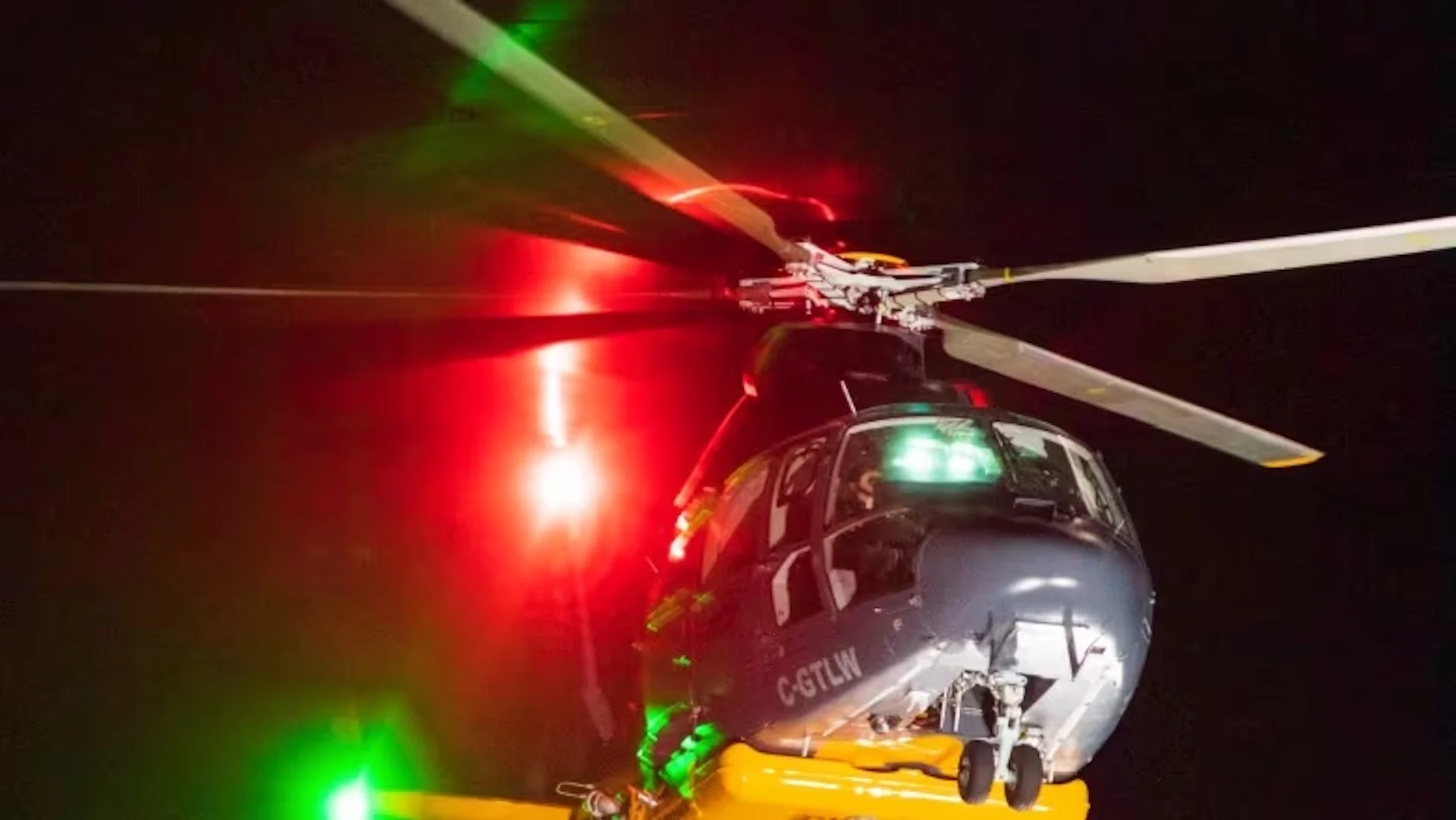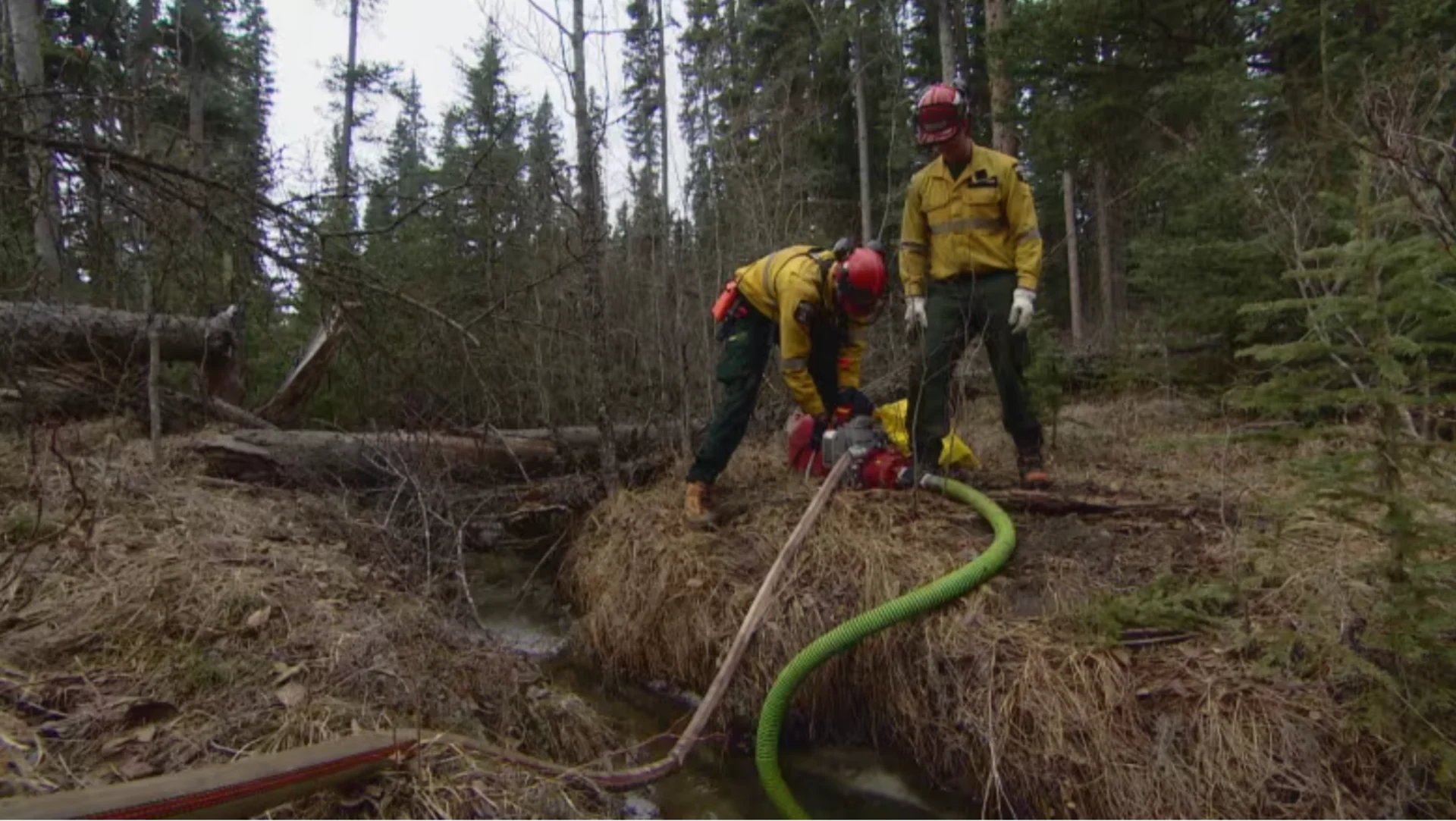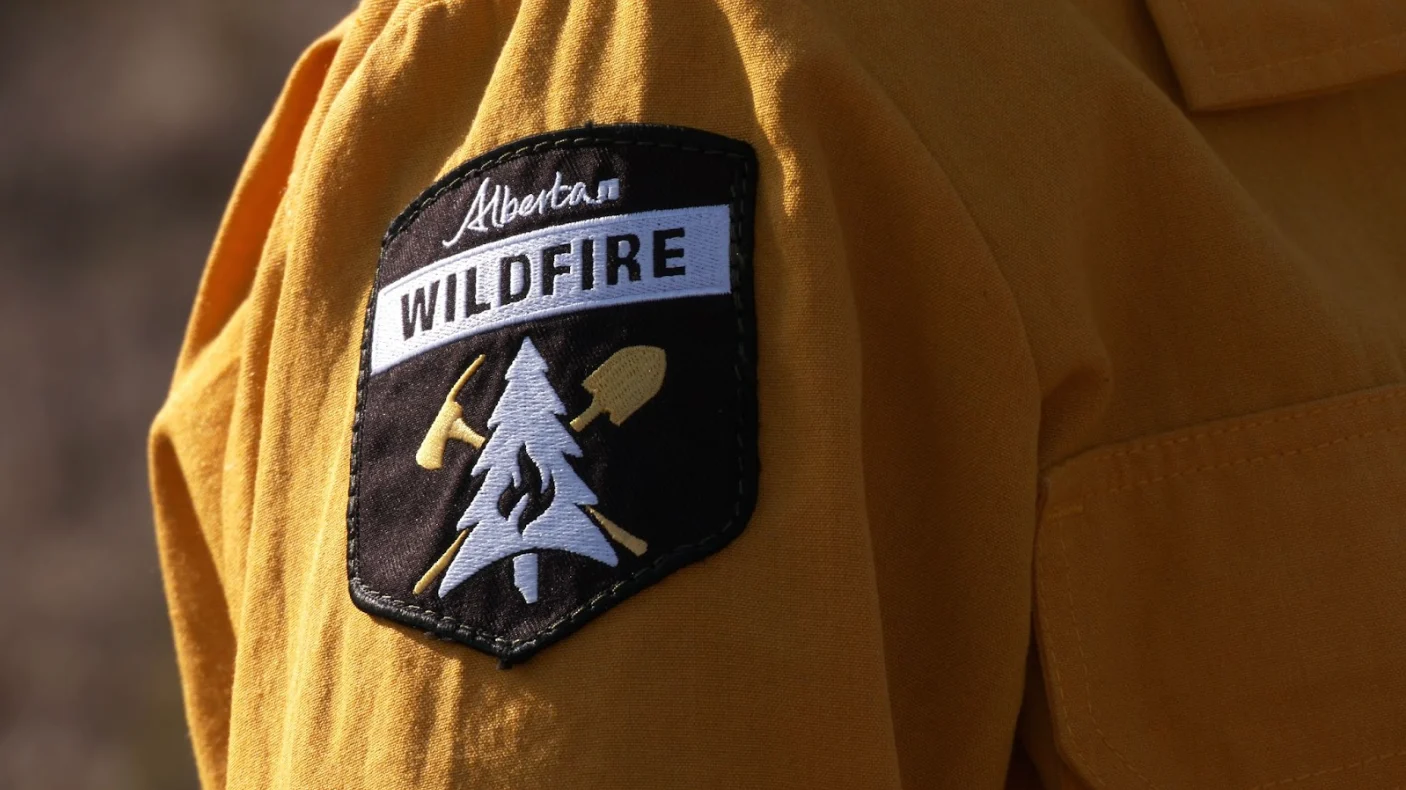
Alberta amps up 24-hour wildfire-fighting tools with nighttime helicopters
New helicopter water-bomber crews in Alberta are equipped to fight wildfires in the dark.
Three night vision-equipped helicopters were stationed at the Slave Lake air tanker base this past week, one of the province's busiest firefighting aircraft bases, about 250 kilometres north of Edmonton.
CANADA'S WILDFIRES: Visit The Weather Network's wildfire hub to keep up with the latest on the active start to wildfire season across Canada.
"It's a game changer for nighttime activities, said Trent Lemke, president and operations manager at B.C.-based helicopter charter company Ascent Helicopters.
Alberta is believed to be the only province in the country currently using helicopters to battle wildfires at night.
"I think Alberta is on the right track," Lemke said. "We need to be looking at sustained action on these fires 24/7."
The helicopters will mainly be used to try to stop wildfires that are threatening homes and infrastructure, Lemke said in an interview with CBC Edmonton's Radio Active.

(Peter Evans/CBC)
"When I first started fighting fire 20, 30 years ago, we never lost homes," Lemke said. "Now it's like every summer we're losing homes and that's hard to take. You wish you could do more. And I think this is a good step in doing more."
The province contracted its first night vision helicopter as part of a pilot program during last year's record-breaking wildfire season, allowing aircraft firefighting crews to work extended hours at night, when wildfire behaviour is more subdued.
Lower temperatures and higher humidity at night enhanced the ability of crews to extinguish fires, said Forestry and Parks Minister Todd Loewen.
The helicopter was used on several fires during the 2023 wildfire season, including ones burning near Little Red River Cree Nation, Edson and East Prairie Métis Settlement, to assist with dropping water on fires, reconnaissance and moving personnel.
Two more night vision helicopters were brought in for this season, Loewen announced Monday.

A Talon nighttime helicopter drops water during a training exercise in this file photo. Alberta will be using nighttime helicopters to fight wildfires this year. (Submitted by Talon)
"The addition of two night vision-equipped helicopters will allow us to carry out an increased number of nighttime heli-tanking operations"
"That is something that is new to Alberta and I believe we're the only jurisdiction in Canada that has the night vision helicopters working on wildfire," Loewen said.
More than 250 wildfires have already been fully extinguished since the beginning of this year, Loewen said in a wildfire information update Thursday.
One of the benefits for the helicopter crews fighting wildfires at night is the quiet, Lemke said.
During the day, a busy fire could sometimes involve more than 30 aircraft, he said.
"It gets really busy, radios are chaotic," Lemke said. "The nice part when you're one of three in the whole province is it might be a little quieter."

(Connor O'Donovan/The Weather Network)
The helicopters have been modified with night vision goggles.
Lemke's company will be training Alberta Wildfire crews to use the helicopters to conduct nighttime tanking operations.
"When you're flying under NVG goggles, it's a very monocular view," Lemke said, comparing it to looking through a paper towel roll, with no colour.
"Under the goggles, everything's black and white," Lemke said. "It's very tubular and very forward. It's awesome.
"You have the clarity that you would have during daytime operations, but you lose certain things like peripheral."
The helicopters could also be used as a safety net for on-the-ground firefighters, Lemke said.
"Now, if somebody gets hurt, we have the ability to go in and pull those people out and get them to proper care. So, it helps bolster their ground support of 24-hour operations also."
WATCH: Four steps to protect your home and prepare for wildfire season
Thumbnail courtesy of Talon via CBC.
The story was originally written by Thandiwe Konguavi and published for CBC News. It contains files from Cameron MacCuish.









